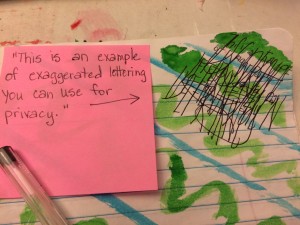Art Journals incorporate art and written word as a means of personal expression.
Sometimes, however, you may wish to write something that is quite private. Your journal should be a safe place for you to share with yourself. There is something very freeing in putting your thoughts and feelings on paper.
But if you are concerned that someone else may come along later and read what you have written, there are ways to protect your privacy and still enjoy the benefits of art journaling. (See the following examples:)
1. Glue.
There are several ways glue can create privacy. (You can look back at the page and remember what you wrote, but no one – yourself included – will be able to read it.)
a. Write on the page and glue something over it.
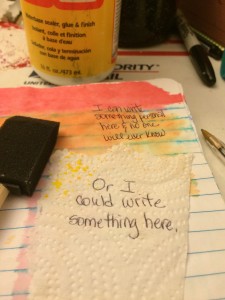
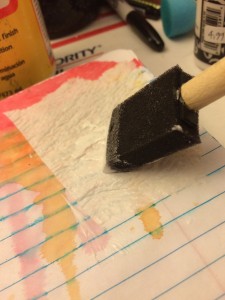
I used a piece of paper towel.
(Be careful. It became transparent when I tried to cover with watercolors. So I used brown to hide the writing. See below.)
b. Write on the back of something and glue it to the page
I used Mod Podge to glue the paper towel to the page.
1. Write on something.
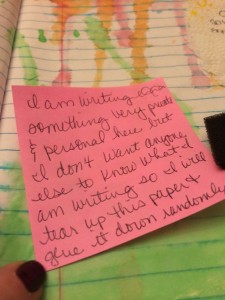 2. Tear it into strips/pieces. Glue the pieces in randomly.
2. Tear it into strips/pieces. Glue the pieces in randomly.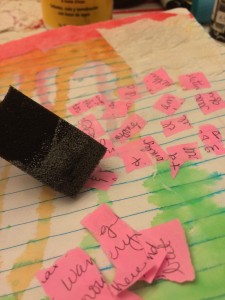
I used Mod Podge again. The writing is visible, but anyone who could actually mentally piece it together and read it has WAY too much time on their hands…
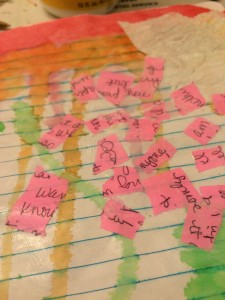 Here is the note after I finished gluing it down.
Here is the note after I finished gluing it down.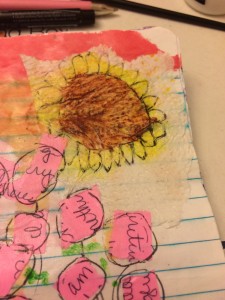
The pink pieces made me think of flowers. I wanted to incorporate the paper towel into the scene. I used yellow watercolors, but then I could read the writing. So I went over it with brown.
I turned it into a sunflower. Then I added circles and stems to the pink. Now it just looks like additional random texture in the art.
2. Modified Writing.
Visible writing can create interest on the page. (You can look back at the page, and MIGHT be able to read it with extreme effort. Anyone else may just see the markings as scribbles or texture.)
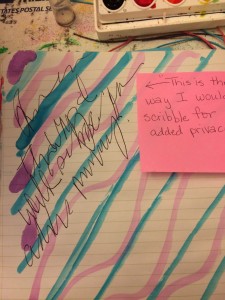 1. Scribble. Deliberately make your writing illegible. This works well if incorporated into shapes, spirals, waves, etc.
1. Scribble. Deliberately make your writing illegible. This works well if incorporated into shapes, spirals, waves, etc.
2. Exaggerated lettering. Make tall letters very tall until they overlap other lines. Round letters can become huge circles.
c. Spacefree.
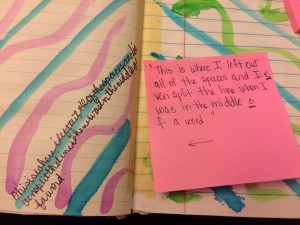 Ifyouleaveoutallthespaceswhenyouwriteitbeco
Ifyouleaveoutallthespaceswhenyouwriteitbeco
mesmoredifficulttoreadwhathasbeenwrittenandnoticethatitisokaytosplitlinesinthemi
ddleofaword
d. Doubleup.
Write over what you have already written.
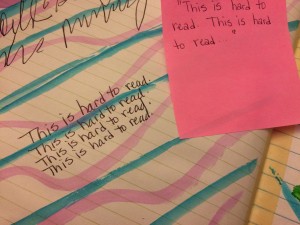 First layer.
First layer.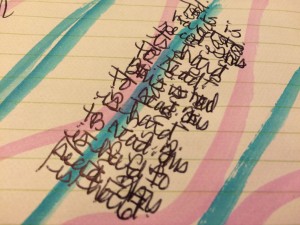
Two layers: one is horizontal/one is vertical. Sometimes this is enough. But I prefer to add a diagonal layer as well.
See how hard it is to read with 3 layers?
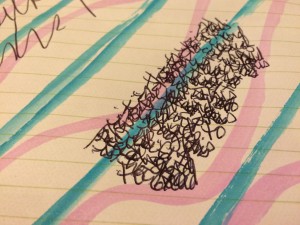
3. Tape.
If you write on the page or the back of something and use tape to hinge it down, you can then disguise it. No one else needs to know it even lifts up. (This allows you to reread it, but it is camouflaged.) This example is from a composition notebook journal.
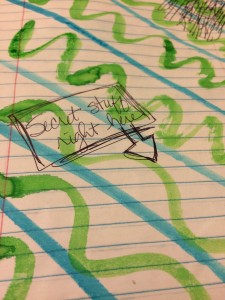 Write on the page.
Write on the page.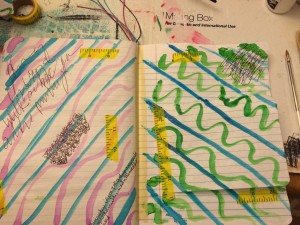
I used one of the pages I removed from the composition notebook and went over it with watercolors to make it match the page beneath it. I added it to the page with washi tape (colorful low-stick decorative tape found in craft and office stores). Then I added matching tape around the page to help it blend in.
4. Other craft supplies.
If you add paint or other supplies, you could write on your page and add something over your journal entry.
 I wrote under the scrapbook paper and under the acrylic paint.
I wrote under the scrapbook paper and under the acrylic paint.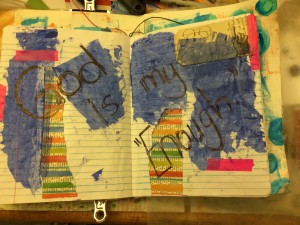 (For something I wanted to see later, the tag with glasses is actually hinged with washi tape. I can lift it to see what I wrote.)
(For something I wanted to see later, the tag with glasses is actually hinged with washi tape. I can lift it to see what I wrote.)
